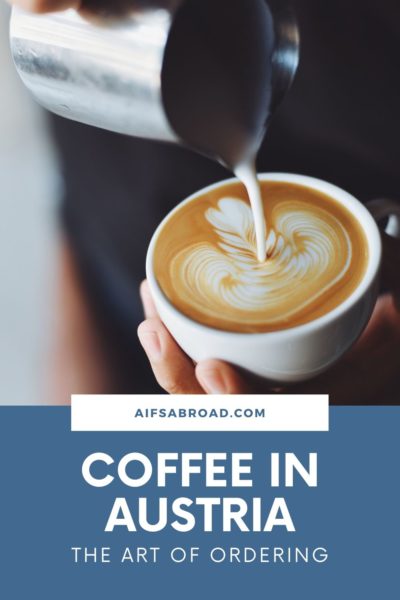And we thought the Italians were serious about coffee, but they’ve got nothing on those in Austria!
Check out these instructions from our office in Salzburg on how to order coffee in Austria:
In Austria, you never order just coffee — they’ll know you’re a tourist.
There are several different types of coffee which also vary from region to region. The picture shows how a proper coffee in Austria is served, always with a glass of water. A spoon to stir the coffee is not just placed anywhere, but on the edges of the water glass. Viennese historians have found that serving water with coffee was not to dilute the coffee or for digestion purposes, but it symbolizes how much the customer is valued. This beautiful custom dates back to the Orient, where coffee and water were very rare and precious items. When serving a glass of water with coffee, this shows the guest how much he is valued.
There is no plain coffee in Austria. That′s right; there are easily a dozen coffee variations available in a decent café and ordering simply “coffee” might leave the waiter disgusted. If you want to shine in a café in Austria, you will have to prepare to order something more specific.
To help resolve the confusion, here is a quick overview of the most common specialties of coffee in Austria:
- Kleiner Brauner and Großer Brauner: Means “little brown one” or “large brown one” and comes close to what people consider to be ordinary coffee: black with a bit of milk, yet typically not filtered, but steamed like espresso.
- Melange: The king of coffee, a mix of frothed milk and steamed coffee similar to the Italian cappuccino, but consumed at any time of the day.
- Milchkaffee or Café latte: A large coffee with frothed milk, has been around for a long time, but recently gained popularity probably due to its fancy Italian name that sounds much cooler than Milchkaffee.
- Einspänner: Strong, black coffee typically served in a high glass with a dash of whipped cream.
- Fiaker: Named after horse-and-carriages, the Fiaker is a rather not-so-common drink of coffee with a shot ofAustrian rum and whipped cream.
- Mazagran: A cold Fiaker-variation, coffee, ice, a shot o rum- and possibly a bit of sugar. A wonderful boost of refreshing energy in the summer.
- Verlängerter: A diluted, and thus weaker, but larger version of the Großer Brauner, typically served with milk. Means “extended one.”
- Schwarzer or Mokka: Strong, black coffee, normally consumed with a lot of sugar, but served without.
- Kurzer or Espresso: In recent years the Austrian term Kurzer (meaning “short one”) has almost gone extinct and these days the international espresso is to be found more commonly on menus.
- Türkischer: Meaning “Turkish one” is Turkish style coffee- grated coffee boiled for a long time in water with sugar and served as a very hot, strong coffee with the grains still in the cup.
- Eiskaffee: Cold coffee with vanilla ice cream, chocolate and whipped cream-served typically in the summer months, and ideal for the hot season. Only iced tea is more refreshing.
- Cappuccino: What is sold in Austria under that name is NOT the Italian (thus not the international) version of a cappuccino, but a regional variation made from coffee and whipped cream rather than frothed milk.
